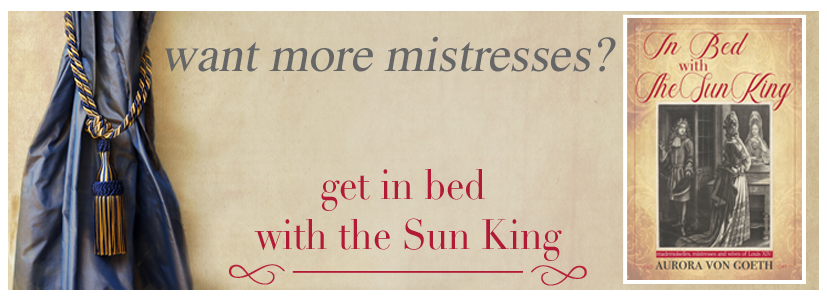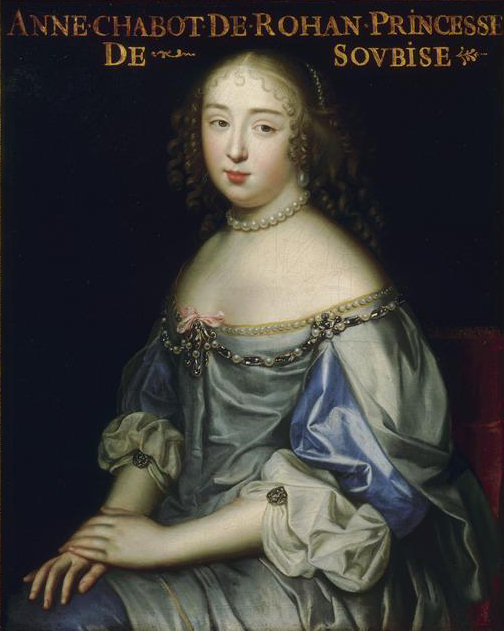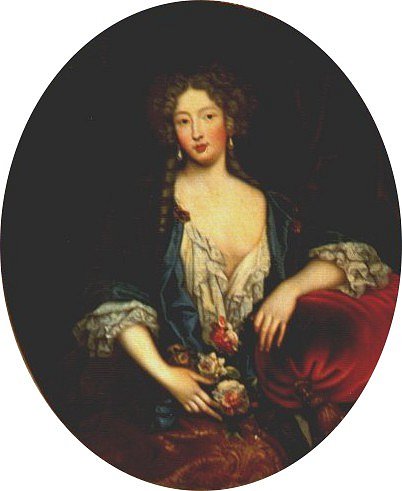Marie-Elisabeth de Ludres, Marquise de Bayon
A canoness, an almost-Duchesse, a mistress. Born in Lorraine in 1647 to Jean de Ludres and his wife Claude des Salles, Marie-Elisabeth came from a family related to the first Ducs de Bourgogne.

Due to her high-birth, she was admitted to the Chapitre des dames nobles de Poussay, a abbey of women, as child to be educated and raised virtuous. Isabelle, as Marie-Elisabeth was nicknamed, grew up in company of the nuns and entered the ranks of canoness, a member of a religious community of women living a simple life. But her life did not stay that simple.
As she was fifteen years old, the Duc de Lorraine visited. He was fifty, a libertine, who had accused his wife Nicole of witchcraft and wished the death-penalty on her in order to divorce her. His rank of Duc came from her, but he deposed and replaced her as monarch of Lorraine in 1625. Claiming that she had bewitched the priest that married them and the marriage was thus invalid. The Church saw this a bit different and refused to grand a divorce, which did not stop him from marrying his mistress Béatrice de Cusance in 1637. Of course, the Church declared the marriage not valid. On top of it, they excommunicated him as well… which did not bother him much either.
Upon seeing Marie-Elisabeth, he forgot Béatrice de Cusance, as well as other females he promised marriage too, although being married… invalidly. He had lots going on in that department. The Duc took in mind to marry Marie-Elisabeth and make it a valid marriage this time. His actual wife Nicole died in 1657 and since the marriage with Béatrice de Cusance was deemed not valid, he was free to marry properly.
Marie-Elisabeth’s parents agreed to the match and the engagement was celebrated with much ado at the church of Richardménil. While la belle Isabelle waited for the announcement of a date for the marriage, the Duc made merry with others. Apparently he had three mistresses during that time. A year passed with no date being announced and Béatrice de Cusance, who was in first grief-struck the Duc did not want to marry her proper, after she had given him four children, went into attack-mode. They had lived separate lives for a while, but a marriage would legitimise the children. She persuaded him to break the engagement with Marie-Elisabeth and marry her proper instead. The Duc married her for the second time, and this time properly, only to be widowed two weeks later as Béatrice de Cusance died suddenly.
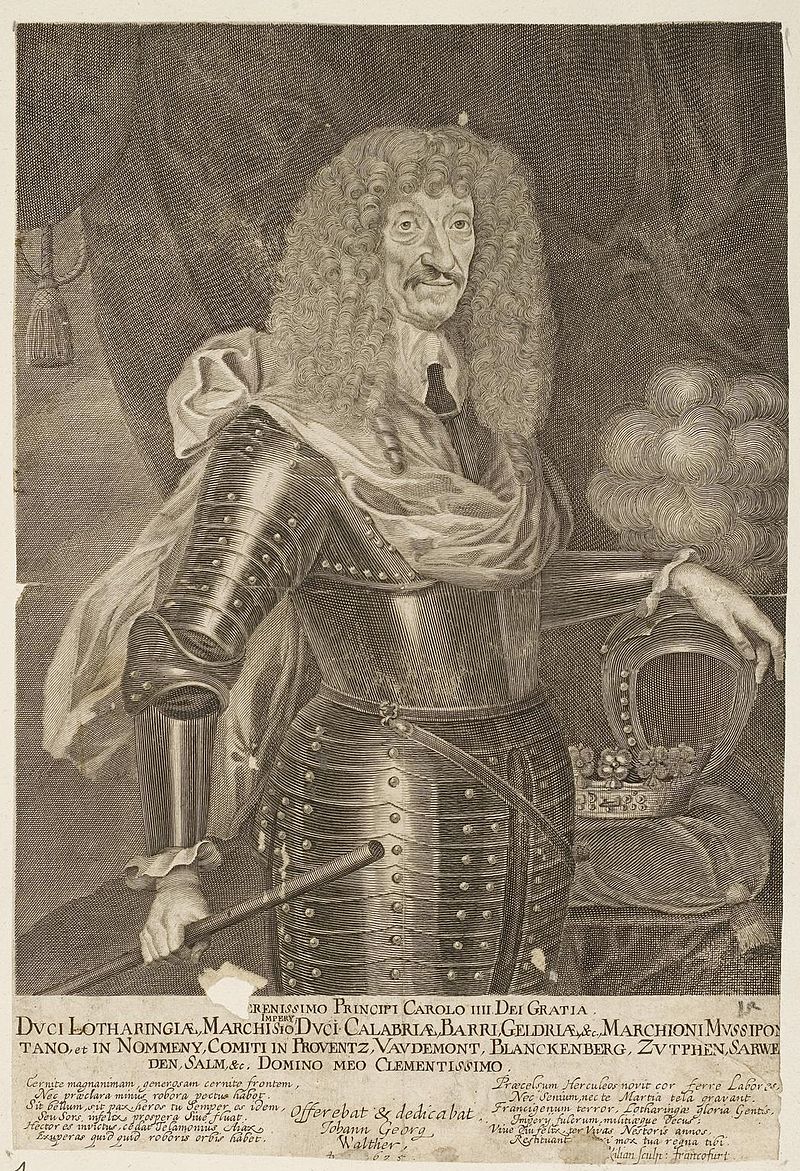
Being a ladies-man, it did not take long until the Duc had the desire to marry once more. This time the chosen bride was the thirteen year old Marie-Louise d’Apremont. Now it was Marie-Elisabeth who went into attack mode. All of it, the broken engagement and marriage to Beatrice, wounded her to the very bones… and now that. The Duc promised to marry her and he ought to keep that promise. She hadn’t done anything to provoke the broken engagement and he was free to marry again. Marie-Elisabeth teamed up with the clergy of Lorraine in order to get the Duc to keep his promise of marriage. He didn’t want to hear anything of it and, instead of keeping his promise, he threatened to accuse her of forgery and lèse-majesté. He married Marie-Louise d’Apremont the following year, in 1664.
Completely disenchanted, Isabelle followed the advice of her mother and let the case drop. She left her native Lorraine to seek shelter at the court of Louis XIV. Travelling there together with her parents, she was introduced to king and court on the afternoon of May 6, one day before Louis XIV amazed his court with les plaisirs de l’Île enchantée.
Although she did not reside in the convent anymore, Marie-Elisabeth was allowed to keep her canoness status and to act demoiselle d’honneur to the Sun King’s sister-in-law. She remained in the service of Henriette d’Angleterre until 1670, when the Duchesse passed away. Afterwards, Marie-Elisabeth entered the service of Queen Marie-Thérèse d’Autriche and in 1673 that of the new Duchesse d’Orléans.
La belle chanoinesse de Poussay was a woman of great beauty, she was tall, had a good figure, voluptuous features and a strangely attractive lisp and Teutonic accent. Louis XIV noticed the very same in 1666, as Marie-Elisabeth performed in a ballet… but he was too torn between Louise de la Vallière and the charms of the Marquise de Montespan to pay too much attention to her. While the King was busy with figuring out which of the two dames he preferred, Isabelle collected a long list of admirers. Bensérade and Voiture, the Duc de Lesdiguières, the Duc de Villeroy and also the Duc de Vivonne, brother of Madame de Montespan. Philippe de Bourbon, Duc de Vendôme, was also madly in love with her and even willed to duel his rivals.
Although flattered by all the attention, Marie-Elisabeth was not willed to engage with any of the gentlemen. She kept a rather virtuous lifestyle and was not that interested in the bad poetry she received from the Duc de Vendôme. Marie-Elisabeth wanted more, namely a good marriage instead of empty promises.

That changed in 1675. As Louis XIV broke with Madame de Montespan, due to the Church going on about their scandalous and adulterous liaison, la Montespan left court for a bit…. and Louis developed an interest for la belle Isabelle. Although the whole thing was handled rather discreetly, Madame de Montespan got wind of it and wasn’t amused at all. She was sure that her Louis would come back to her sooner or later, but just to made sure she began to spread all sorts of rumours regarding Marie-Elisabeth. For example that la belle Isabelle’s body is covered all over with scab, because she suffers of scabies and leprosy, along with various other nasty diseases. The King believed her, or at least acted as if he did. A year later, however, after he had broken his friendship to the Princesse de Soubise and Madame de Montespan was away from court again, his interest in Marie-Elisabeth, who had resisted him to that point, returned and he made it his mission to find out what was below her gown.
What he found was not what Madame de Montespan said would be there. The latter raged and threw tantrums, calling Isabelle a haillon -rag-, all in vain. Marie-Elisabeth was a la mode now… and all the attention she received from King and court, turned virtues into vices.
From the day on where Louis XIV first went adventuring underneath her gown, Marie-Elisabeth was persuaded she could replace the seven-year older Montespan as maîtresse en titre. Various others had tried and failed, yet Isabelle believed she could do it. She started to act as if she was not just maîtresse en titre but the actual Queen and did not grow tired to point how she actually already replaced la Montespan. The King himself had not really a clue about it. He had left France to fight the Dutch and upon returning from one battlefield, found himself in the heart of another. Ludres versus Montespan.
While he was away, Marie-Elisabeth committed the audacity to write him in person, instead of having messages forwarded to him via others. Now, he found out that she was boasting about a relationship he wanted to keep secret. She even went so far as to publicly say she was pregnant with the King’s child… and whenever she entered the presence of the Queen, all the high-ranking ladies with the right to sit, rose from their tabourets. As Primi Visconti writes: “On the sole opinion that she was loved by the king, all the Princesses and Duchesses rose at her approach even in the presence of the Queen, and only sat down when Madame de Ludres made a sign to them, just as it was with Madame de Montespan.” What about the Queen? These marks of deference made her aware that her hubby had something going on with the lady in question. She was urged to drive the intruder away… and replied “But it is Madame de Montespan’s business!”
The situation was rather scandalous. Madame de Montespan tried her best to keep Marie-Elisabeth on her toes and also the sister of the Marquise got involved. Primi Visconti noted “Madame de Ludres et Madame de Thianges échanger des regards de basilic. Elles se heurtaient quand elles se rencontraient.”
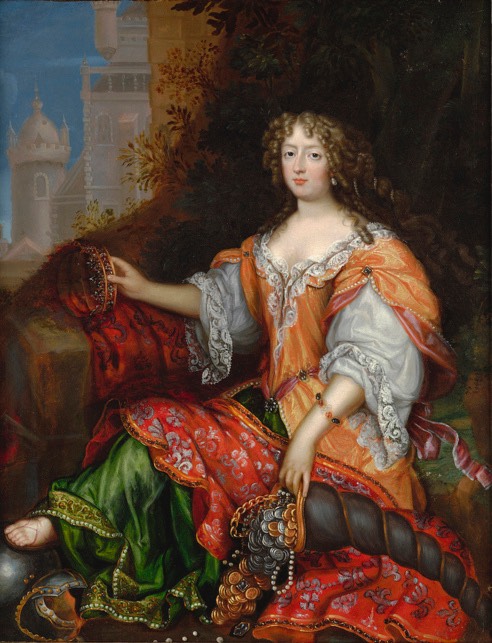
In the end, it was Isabelle herself who gave Louis XIV reason enough to break with her. He found her behaviour intolerable and returned to Madame de Montespan. How the mighty have fallen, was the common tone at Versailles afterwards. Marie-Elisabeth mourned her loss with plenty of tears, but nobody felt sorry for her. In the least. Instead, the court flocked back to Madame de Montespan to praise and admire.
However, shortly later, after Mass, the King locked his gaze with that of a desperate looking Madame de Ludres and approached her to exchange some words…. Montespan flew into a mighty rage once more. She feared Louis might have changed his mind, again, and confronted him with a mighty scene. She did not need to. The proud Marie-Elisabeth accepted her defeat. The woman who got Princesses and Duchesses to rise for her, now locked herself away at the Chateau de Bouchet despised by the whole court. Forced to act as if nothing had happened, as she had to return to court in order to perform her duties in service of Liselotte von der Pfalz. When the King approached, she left the salons. When the Queen passed by, she averted her gaze. The posture, with which she dealt with her defeat, slowly changed the court’s opinion. As then Louis XIV offered her quite the sum of money as present and she declined politely, despise turned into admiration.
Marie-Elisabeth withdrew from court in 1678 to join the convent de la Visitation Sainte-Marie in Paris. By then totally forgotten by the King, who exclaimed he thought she already had entered a convent as he heard the news. La belle Isabelle changed convents several times over the years, travelling from Paris to her native Lorraine and back. After some years, financial troubles forced her to accept a pension from Louis XIV in order to pay her creditors. 2000 écus as pension and 25000 francs for the creditors, according to Madame de Sévigné.
Later on, she bought land in Lorraine and received the title of Marquise. Marie-Elisabeth never married and devoted herself to various charities, like the enlargement of the church of Richardménil, where once her engagement to the Duc de Lorraine was celebrated. While in Lorraine, a certain Fabien Bécu was employed as her cook and married her chambermaid Jeanne Husson. The couple had seven children, one of them being Anne Bécu, who gave birth to a daughter called Jeanne in 1743. This Jeanne, better known as Madame du Barry, became the last maîtresse en titre of Louis XV.
Marie-Elisabeth de Ludres died in Nancy, nearly 80 years old, on January 28 in 1726.
